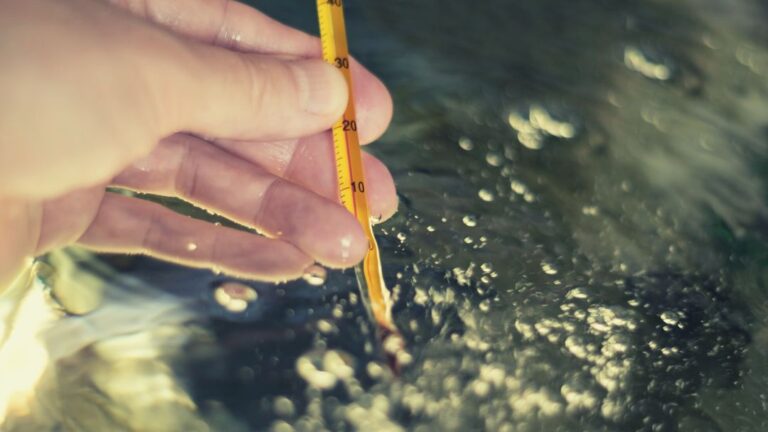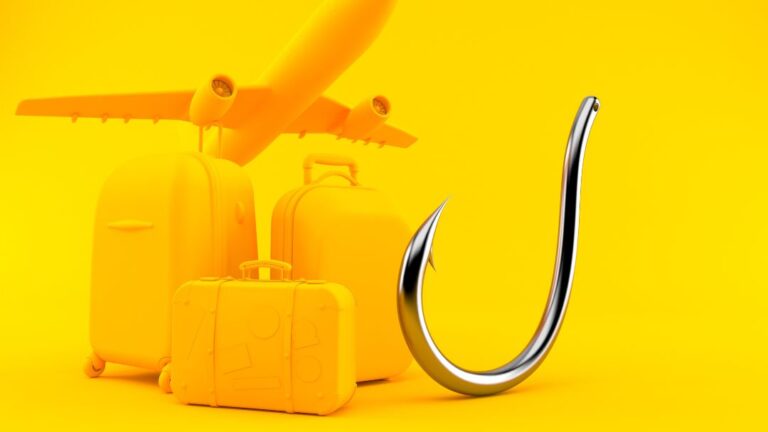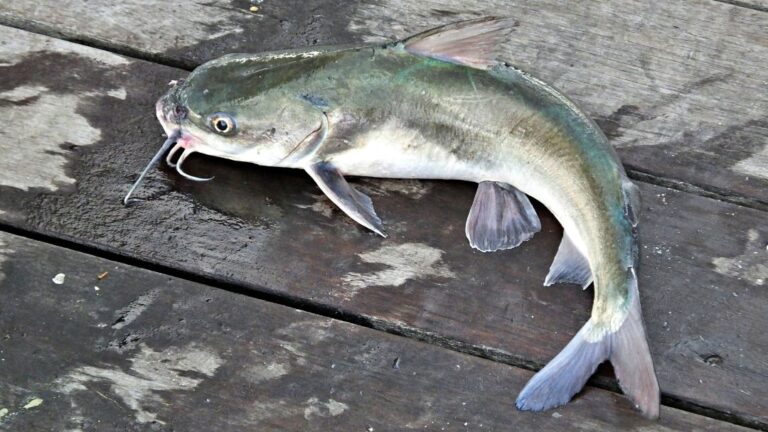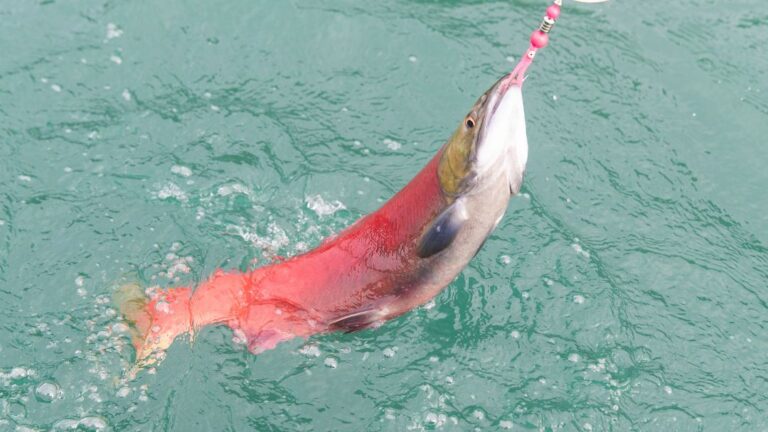Anglers use fishing weights to weigh the lure or bait down and increase their rate of sink and anchoring ability. It helps you reach the fish you are targeting to a desired depth. Fishing sinkers are available in various materials and sizes. Are fishing weights still made of lead?
Apart from lead, fishing weights are made of steel, tin, tungsten, brass, bismuth, and clay. Countries like USA and Canada completely banned using lead. But many countries around the world use lead-based fishing sinkers along with other material-based weights.
Why Are Traditional Fishing Weighs Made From Lead?
Nowadays, manufacturers use a wide range of materials to make fishing weights.
But earlier, most fishing sinkers are made from lead.
Why all makers used to prefer this metal for making fishing weights? Let’s figure it out!
01. Denser Material
Lead is a very malleable, ductile, and dense material compared to steel and zinc.
The mass per unit volume of lead is pretty heavier because its atoms are very close.
Compared to other metals, its density is about 11 kg/liter.
Its grams per cubic centimeter or pounds per cubic foot are bigger than other many other materials.
02. More Affordable
Lead material is fairly abundant and easy to process. They have less scarcity, unlike gold.
The price of lead is $1 to $2 per pound. They cost around ten times lower than tin.
On the other hand, the price of gold is $23,000+ per pound. Since they are easily available, they are cheap.
03. Cost Efficient
The dense physical structure of lead makes it a more convenient choice to use on fishing sinkers.
You need less amount of lead to make the fishing knoch enough heavy.
This makes the material cost-efficient as a minimum amount of metal is needed in the fishing gear.
04. Easy To Process
Lead can be easily molded because it has a low melting temperature.
Its melting point is 327.5 C° (621 F). This makes it easy to process and gives it a perfect shape as fishing gear.
It comes in handy to manufacturers of thousands of fishing weights within a short period. You will save time and money.

Why Many Countries Banned Lead In Fishing Weights?
Most states of the USA and Canada banned using any fishing weights made from lead. Using lead-free fishing sinkers is mandatory if you are fishing in these countries.
It causes a serious risk to wildlife, particularly waterbirds. They often mistake it for small pebbles or food items.
The heavy metal toxicity of lead can cause oxidative stress and various health problems.
Besides, fish may experience synaptic damage and neurotransmitter malfunction by consuming these lead substances.
It affects the overall biochemical and physiological functions of fish. When human beings eat these fish, they will also be affected.
What Materials Are Used In Modern Fishing Weights?
Modern fishing sinkers are not just limited to lead. Many are completely free from the lead due to the ban on lead.
Here are different types of fishing weights based on their materials.
01. Steel
This material is pretty heavy yet affordable than other lead alternatives.
It is not toxic-based metal like lead. You can ensure 100% safety for wildlife.
Besides, the metal has a larger profile of all and can show a reliable performance for relaying back to the angler feel.
Steel fishing weights are a good choice if you don’t need to crimp on a line.
You can’t use it for any fishing technique that requires pinching or a split shot.
Besides, it is filled with a scent to attract fish and makes your fishing job easier.
02. Tin
Does your fishing location have a presence of weed snagging?
Tin can be one of the best materials in fishing weights for this purpose.
The metal is soft and lightweight. Plus, it can shake and pulse more while falling slowly and seductively.
If you are drop-fishing the lure for bass in cold water situations, tin-based fishing sinkers are a good choice to consider.
When it comes to a decent split shot, tin-based fishing sinkers are one of the best options due to their extreme softness.
Moreover, this type of fishing weight is a great choice for jig heads. You can use it in rocky situations when fishing in deeper water of 5 feet or more.
03. Tungsten
Tungsten is one of the best choices if you are looking for the smallest profiles. It is toxin-free and one of the best alternatives to lead.
It is 1.7 times denser and a few times harder than lead. Feeling the lowered composition and structure with a bite or lure appears easygoing.
Whether you are fishing rocks, wood, clay, or sand bottom, you will get a solid feel from this type of fishing sinker.
Due to its extreme hardness, it will provide more sensitivity than lead. It allows you accurately feel and keep your bait near the bottom.
Packing more weight in a smaller package is simple for this fishing weight. It can transfer more vibration up to the angler.
In addition, the fishing sinker is pretty versatile to use for slip sinkers, drop-shot weights, jig heads, and various other conditions.
04. Brass
When it comes to creating a better underwater attraction for bass, brass fishing weights can be a good pick.
This type of weight can produce a lot of loud ticking and clacking sounds underwater.
It comes in handy, especially for dirty water conditions, as fish will struggle to find the offering in blur water.
Anglers can feel the fish more sensitively because you won’t have to concern about any intervening sinker weight.
Moreover, fishing sinkers that are made from pure brass are highly resistant to abrasion, corrosion, aging, and a good shock.
You can use this fishing weight to submerge it into the deep water quickly. It is perfect for using some jigs and a few larger sinkers.
05. Bismuth
This type of fishing sinker offers a specific gravity, which is adequately high to provide enough weight without unwanted bulkiness.
Its specific gravity is around 8.7, which is lower than the specific gravity of lead.
Worry about breakage issues when slammed against a rock? The sinker has a rigid structure to keep it in good condition for a long time.
This kind of fishing weight is exclusively used for various types of lures.
Besides, it has a low melting point characteristic, making it highly pliable. This will ensure low absorption and, therefore, low toxicity.
06. Ceramic
When it comes to lighter floats, ceramic-based fishing sinkers work the best.
It won’t sink like lead-based fishing sinkers because ceramic-based fishing weights lose 1/3 of their air weight in the water.
Besides, this type of fishing gear creates an attractive and loud sound, like a crayfish trapping.
Moreover, it is less likely deform and rusts over time. Anglers can use it for a long time.
Worry about snagging on the lower water level when reeling in your line? This fishing weight is simple to cast and eliminates the snagging problem.
Manufacturers use 1,300 degrees Fahrenheit temperature to bake it. This ensures long-lasting rigidness.
Wrapping Up
Earlier manufacturers used to only use lead materials for making fishing weights. But time has changed. A dozen types of fishing materials are available to use for fishing sinkers.
Most are eco-friendly and minimally toxic. It allows you to enjoy fishing without the fish and environment. Some are more affordable and easy to work with than leas-based sinkers.
Hopefully, you got a clear overview of the question, “Are fishing weights still made of lead?” Many companies still use them in a moderate amount as they are not banned yet in there.






